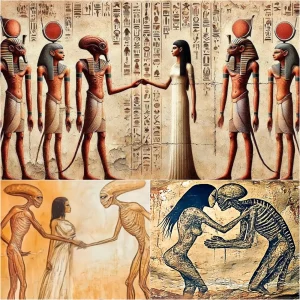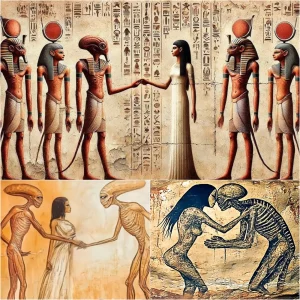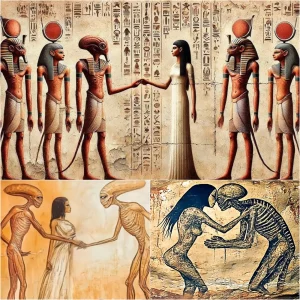The discovery of the massive mythical bronze creature at Sanxingdui, a renowned archaeological site in southwest China, is a significant find shedding light on the ancient civilization of the region. Here are the key details about this remarkable artifact:
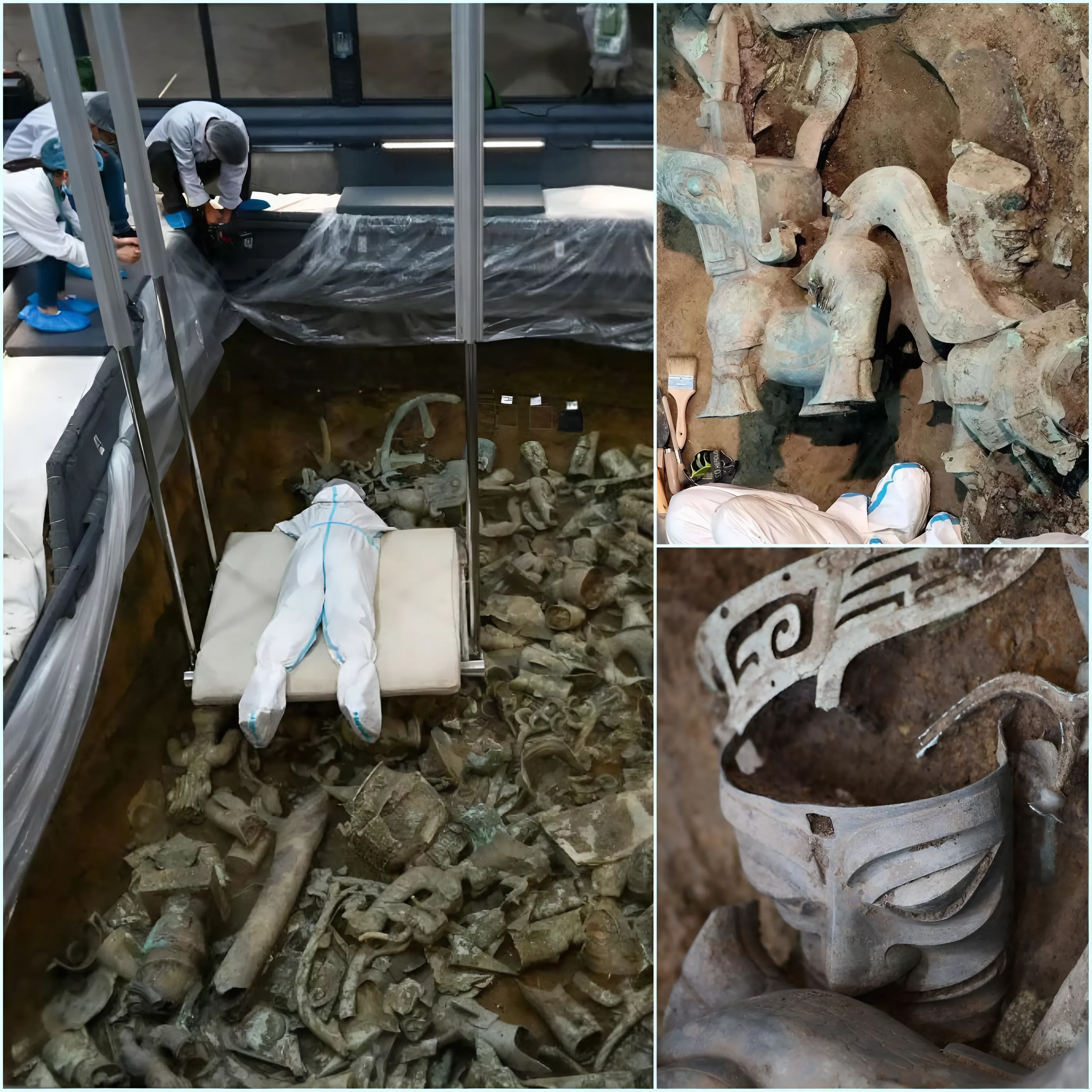
1. **Description of the Artifact**: The bronze creature is described as a large mythical animal, weighing 330 pounds (approximately 150 kilograms), with dimensions of 3 feet in length and height. It is the largest and most complete animal-shaped bronze unearthed at Sanxingdui.
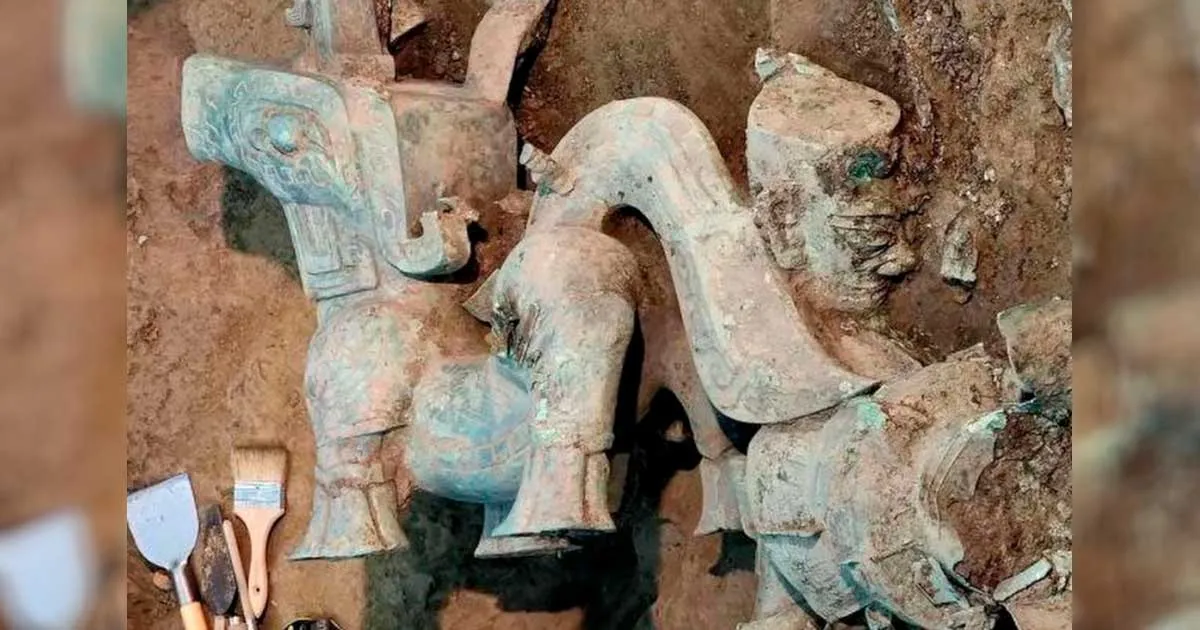
2. **Features of the Creature**: The creature has a sacred tree engraved on its chest and a horn on its head. Notably, it also features a bronze statue of a man standing on its back, dressed in a long robe. Archaeologists speculate that this figure might represent someone attempting to control or interact with the mythical creature.
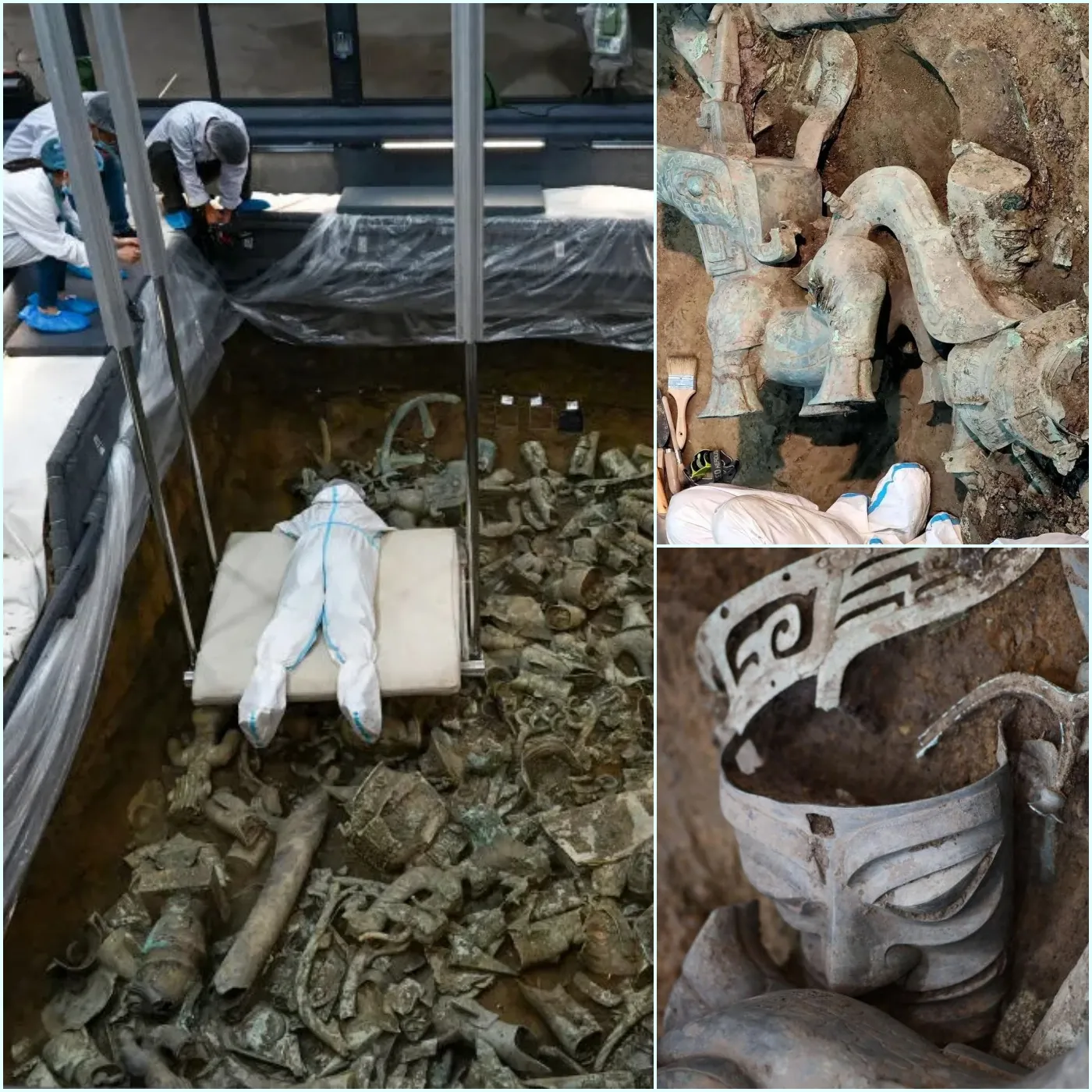
3. **Context and Significance**: Sanxingdui is a Bronze Age site associated with the ancient kingdom of Shu, which existed until 316 B.C.E. The site has been a treasure trove of artifacts, including sacrificial pits filled with thousands of valuable items such as gold, bronze, and jade.
4. **Historical Background**: The site of Sanxingdui was initially discovered in 1986, though local findings hint at ancient cultures there as early as 1927. Since its discovery, it has yielded numerous artifacts that have reshaped our understanding of ancient Chinese civilization.
5. **Unique Nature of the Artifact**: Among the roughly 14,000 artifacts uncovered at Sanxingdui, this bronze creature stands out as the first of its kind in terms of its size and complexity. Previous discoveries of mythical beasts at the site were much smaller, typically measuring 20 to 30 centimeters in length.
6. **Ongoing Excavations and Future Plans**: The excavation work at sacrificial pit No. 8, where this creature was found, is ongoing. It is expected to conclude between late September and early October. After excavation, the focus will shift to research and restoration efforts to further understand and preserve these invaluable artifacts.
7. **Recent Finds**: In addition to the bronze creature, recent excavations at Sanxingdui have also uncovered rare artifacts such as a bronze box and altar, as well as two millennia-old gold masks within the last year.
This discovery not only adds to the wealth of archaeological knowledge about ancient Chinese civilizations but also underscores the artistic and religious practices of the people who inhabited the region over three millennia ago.


